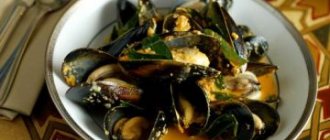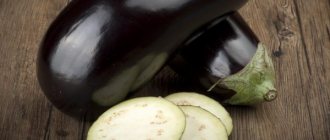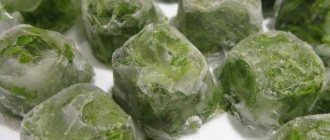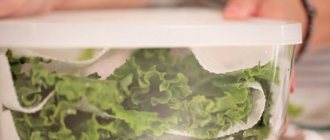The difference between different parts, how to choose
All three parts of celery - greens, stem and root - are sold separately in supermarkets. And each product has a number of categories from which you can choose a truly high-quality ingredient for cooking.
Root
Celery root may somehow remind you of an impressively sized apple. However, its shell is rough. The flesh, on the contrary, is white and velvety, the aroma of which is reminiscent of parsley.
Here are some tips to follow when purchasing the product:
- Choose larger root vegetables.
- Also, preference should be given to a dense spine with a uniform color.
- Carefully inspect the vegetable - there should be no spots or soft spots on it. Pay special attention to the top - this is the place where the product begins to deteriorate.
- Tap the root vegetable. This manipulation will allow you to determine whether there are voids inside, the presence of which you can judge by the characteristic ringing sound.
Chereshkovy
The most delicious is petiole celery, the stems of which are colored rich green. This color indicates sufficient maturity and freshness of the product.
But petioles with a slight yellowness or, even more so, a brown coating, are better left on the store counter.
Also, preference should be given to moderately soft but brittle stems. Excessive elasticity is a sign of long-term storage.
Tip : Although the petiole part of the plant has a crunchiness that is valuable for eating in salads, a good way to reveal the sweetness of the product is to boil the stems until tender.
Sheet
If you don’t know what leaf celery looks like, then everything is simple - it looks a little like parsley or cilantro. When choosing greenery, the criteria are standard - it should not be drooping, limp, or yellowed. You should also avoid plants in which the seed shoot is visible. The presence of a shoot with seeds is the reason why the vegetable may taste bitter.
Do I need to peel celery?
Celery can be leaf, petiole and root. And all these parts of the plant are eaten.
The leaves are added to food as a vitamin-rich green, along with parsley and dill. If the leaf part of the vegetable does not need to be further peeled, then housewives have questions about the root and petiole parts.
The stem is used to make juice, fresh salads and stews. It is recommended to peel it, because if the peel is thick, it can add bitterness to the dish.
Celery root looks similar to a turnip. Complex dishes are prepared with it: soups, sauces, roasts, salads. This part of the plant must be cleaned before cooking.
First way
If you want to remove bitterness from your soup, it is best to use dairy products. I remedy the situation with milk and cream. Also, cream and yoghurt can be used to dilute sauces that are too bitter.
The fact is that dairy products are rich in casein, which successfully neutralizes the bitter taste. If it's too harsh, add a little extra fat.
Petiole celery cultivation and care
Gardeners grow this type of celery for its very tasty and aromatic petioles, which are added to many dishes, including even alcoholic cocktails.
Growing petiole celery begins with sowing seeds for seedlings. You can, of course, sow seeds directly into open ground, but, as practice shows, the seedling method gives the best result.
Its seeds are very small and take a long time to germinate. To speed up germination, it is best to first treat them with a weak solution of potassium permanganate or any other organic solution and germinate.
The soil for seedlings can be prepared in the fall by taking garden soil, peat, humus and sand in equal proportions, or you can purchase ready-made soil in the store.
To obtain seedlings, seeds are sown in prepared soil at the end of March. Make small furrows where the slightly sprouted seeds are sown, sprinkled with peat or ready-made soil on top. The optimal temperature for celery germination is 18-20°C. Watering is carried out very carefully so as not to wash away the seeds from the soil. Usually on day 5-6 the first shoots begin to appear. Seedlings need to be hardened off, for which the room temperature is lowered to 15-16°C. When two true leaves appear, the sprouts dive.
Celery seedlings can be planted in a permanent location at the end of May. Petiole celery is planted in furrows. Their depth is no more than 10 cm. Please note: the growing point must be above the ground, it cannot be covered.
When the petioles begin to thicken, you need to start hilling and carry it out regularly as the plants grow and develop. This is necessary to obtain white petioles, which do not taste bitter and are highly valued by chefs.
In addition to hilling, there is another trick to get high-quality bleached petioles: about 2 weeks before harvesting, the petioles are tied at the top and wrapped in paper (you can use newspapers).
Terms and conditions of storage
Celery cannot be stored for long, so it is recommended to buy it fresh. Shelf life depends on storage conditions and averages from 3 to 10 days.
In the refrigerator or cool cellar
Shelf life is from 7 to 15 days.
The vegetables are washed and dried with a paper towel. Then wrap it in cling film or foil or put it in a plastic bag or plastic container and put it in the refrigerator.
You can only store intact celery, without limp leaves or chopped stems. Otherwise it will go bad in a matter of days.
There are also ways to preserve root vegetables for up to two months:
- Stick the roots vertically into dry sand poured into a box or box. The petioles are left on the surface. A box of sand is stored in a basement or cellar.
- Root crops are placed in plastic bags, sprinkled with a layer of sand (2 cm), placed in a room with a temperature no higher than +1°C and a humidity of approximately 90%.
- The clay is diluted with water to a creamy substance. The root crop is covered with a layer of clay, dried and placed in rows in cool storage.
In the freezer
Shelf life – from 6 to 12 months.
It is recommended to store celery in small portions because it cannot be frozen several times.
The following methods exist:
- Cut into small pieces. Freeze in a bag or container. This is how, for example, dressing for dishes is prepared in advance.
- Grind using a blender or meat grinder. Ice trays are filled with the resulting mixture and placed in the freezer.
- The vegetable is frozen without chopping.
Leaf and petiole celery can be frozen whole: the stems with leaves are placed in a tightly closed container and placed in the freezer.
Celery root is also frozen. To do this, it is cut or grated, then packaged in small plastic bags.
At room temperature
Shelf life is from 2 to 3 days.
The longer celery is kept warm, the faster it loses its beneficial properties, taste and appearance. Therefore, you can store it at room temperature if you find a use for it in the near future.
For better preservation:
- Place the vegetable in the jar.
- Fill halfway with cold water.
- Place in a cool, dark place.
- The water is changed daily.
How to prepare each part for use
Before you begin culinary activities, you should find out whether you need to peel celery and how you need to prepare it in order to end up with a healthy and appetizing food. There are some subtleties and secrets on how to peel celery correctly; they relate to different parts of the plant.
Root
If you intend to cook a dish with root vegetables, you will have to remove its peel. Don’t be scared by either the fairly decent weight of the vegetable or the presence of knotty skin - you can get rid of it quite easily.
- Be sure to rinse the product in a decent amount of running water.
- If you are not going to use the whole spine, then cut it into several parts. Wrap the excess tightly in food-grade cellophane and place in the refrigerator.
- Cut off any protruding knots with a knife.
- Using a vegetable peeler, remove a thin layer of skin.
- If tubular areas are present, scrape them out thoroughly or cut them out.
- Rinse the product again.
Tip : To prevent the light flesh of the cut vegetable from darkening and chapping, place it in cold water or sprinkle with lemon juice.
Chereshkovy
The question of how to peel celery often arises among cooks who have had almost no dealings with this product. In the case of petioles, it all depends on the age of the greenery.
For example, stem celery, which is inside the bunch and is still young, does not need to be peeled. It is covered with a very thin shell, which does not affect the taste.
But more mature plants already have a fairly dense film, which, even after heat treatment, will be rigid. That is why it is necessary to get rid of the outer layer. It is most convenient to carry out these manipulations with a regular vegetable peeler - it allows you to cut off the skin quite economically.
Tip : additionally remove the lower part of the stem - about three centimeters, and the upper part, if there are leaf shoots on it.
Sheet
If you use greens, you need to sort them out, getting rid of wilted or yellowed branches, if any. Afterwards, the bundle is simply washed in running water.
Tip : under the pressure of a directed stream from a tap, celery leaves may become wrinkled. To avoid this, dip the bunch in a bowl of cold liquid several times until you get rid of the dust. Then dry it by laying it on a flat surface.
Description of the plant
Celery belongs to plants of the umbrella family. The birthplace of the culture is the Mediterranean countries. Today, celery is distributed throughout the world and is actively cultivated in open/indoor conditions. It is universal in terms of use - all parts of the plant (greens, petioles, roots) are suitable for food. The plant is cold-resistant, grows on well-moistened, loose soils and salt marshes. Can be grown as an annual or biennial crop.
There are 3 forms of celery growth:
- Root- characterized by a large rhizome, weighing from 200 g to 1.5 kg, with small additional roots. The main value is the root. It is dense, covered with a gray peel. The inside is solid, white, and has a specific smell. The ground part is represented by tall hollow petioles that end in a leaf rosette.
- Leafy — the root system is highly branched. The petioles are thin and long. They end in a lush green mass. The main value is made up of sheet plates. Externally, this growth form is similar to parsley.
- Chereshkova — the root system is branched and does not form root crops. The ground part is powerful, with high petioles up to 1 m. Thickened petioles constitute the main value.
Using vegetables
This is a fairly effective method that is applicable to overly salty or spicy dishes. You just need to add raw potatoes to your dish.
This product perfectly absorbs bitterness. Before serving, I remove the potatoes. If you don't have potatoes on hand, you can also use other root vegetables. It is noteworthy that due to these vegetables you will increase the volume of your dish.
Calories with a minus sign
Celery contains a lot of water, a large amount of fiber, and in terms of calories - only 18 kcal per 100 g. The celery diet is recommended for excess weight, allergies, inflammation, colds, diseases of the thyroid gland and genitourinary system. It lasts 2 weeks, its basis is soup. To prepare it you will need 3 liters of water, a bunch of celery, the same amount of cabbage as for regular cabbage soup, 6 medium-sized onions, 2 tomatoes and bell peppers with spices. Boil the soup for 15 minutes. For two weeks, eat it in unlimited quantities, combining it with fruits, vegetables, lean chicken and beef.
But before you go on a celery diet, be sure to consult your doctor, as it is contraindicated for those who have ulcers, gastritis and other health problems!
Meat in puff pastry with root vegetable garnish
You will learn how to cook root celery so that the dish will be remembered for a long time. And if you weren’t a fan of this vegetable before, then try this culinary masterpiece at least once - perhaps it will become your favorite.
Cooking time: 1 hour 30 minutes
Number of servings: 8
Energy value
- calorie content – 505.2 kcal;
- proteins – 24.3 g;
- fats – 26.1 g;
- carbohydrates – 43.4 g.
Ingredients
- minced beef – 550 g;
- puff pastry – 500 g;
- minced pork – 200 g;
- chicken egg – 2 pcs.;
- celery root – 400 g;
- parsley – 1 small bunch;
- porcini mushrooms (dried) – 20 g;
- refined oil – 40 ml;
- sour cream (fat content 20%) – 150 g;
- salt - to taste;
- granulated sugar – 1 tbsp;
- bread crumbs – 100 g;
- onion – 1 pc.;
- nut oil – 1 tbsp;
- mustard – 2 tbsp.
Step-by-step preparation
- Place the mushrooms in a bowl and pour in hot boiling water. Leave for at least half an hour - the product needs to be saturated with moisture as much as possible.
- In a large enough bowl, combine the two types of minced meat. Add very finely chopped onion, add a couple of tablespoons of mustard, one egg, breadcrumbs and add salt. Mix the mixture vigorously.
- Drain the mushrooms, squeeze and chop them into small slices. Do the same with greens. Add to common dishes.
- From the resulting minced meat, form a kind of loaf and place it in the middle of the dough layer. Bring the edges up and fold over the meat. Pinch well. It is best to do this immediately on a baking sheet lined with parchment (additionally coat the surface with oil) so that the cake does not fall apart during transportation.
- Place the dish in the oven, which by this time should already be heated to 200 degrees. Bake for at least 35 minutes, brushing the surface of the dough with an egg or one yolk.
- At this time, peel the root vegetable and chop. It should be cut into medium-sized slices. Then transfer to a frying pan with heated oil. Add peanuts for flavor. Pour in a couple of tablespoons of boiled water and simmer for about 15 minutes. Don't forget to add salt and sugar. If desired, you can add a pinch of pepper. Then put it in a container.
- Without rinsing the pan, heat the sour cream. It is recommended to simmer the dairy product over low heat to avoid curdling, for no longer than two minutes.
- When the roll is ready in the oven, cut a piece, place it on a plate, add celery and generously pour over sour cream sauce.
How to peel celery root
It is recommended to peel celery roots without fail. The rough skin covering the root is actually not digested, has no juice, and also collects all the dirt. If you have celery root in front of you, you need to rinse it in warm water and then peel it.
To make cleaning easier for yourself, try to choose a smoother vegetable with thin, delicate bark while still in the store. This root will be younger and its taste will be better. There will be remnants of green stems at the edge of the root. From this part you can understand how long ago you prepared the product for sale. Celery roots do not spoil, but if you have a choice, choose a vegetable with fresh green leftovers.
The rind of celery can be cut off with a knife or potato peeler - thinly and neatly. If you need a small part of the spicy root, you can immediately divide the vegetable into 2-4 parts. Those that you do not need urgently for cooking are best stored in the refrigerator in a “dressed” form, then the root will remain juicy longer, and its beneficial and taste properties will be preserved until the next use. The same part that you will need for the dish will be much easier to clean when there is an “edge” after cutting.
The peel needs to be cut to the thickness that becomes visible at the cut root - everything that is not juicy pulp is removed. These parts have no aroma or beneficial microcomponents. The only exceptions are cases with dietary nutrition. If you value so-called negative-calorie foods—that is, those that require more energy to digest than they come from them—the sponge layer will come in handy. It is rich in fiber, will help cleanse the intestines and will take a long time to digest. There is no tasty juice in it. But for people with sensitive stomachs it is better not to cook this part.
Celery root is grated on a coarse grater into shavings for salads and stewing, and for sauces a fine grater or blender is used so that the rhizome releases its fragrant juice into the base components. For side dishes, you can cut the root into thin slices. This product is not chopped into cubes or other large parts, as it is very hard and has a distinct odor. In small quantities, the aroma of celery subtly fills the dish, adding noble, voluminous flavor notes.
The root is not stewed for very long until it becomes soft in texture and acquires a light brown, nutty hue.
For proper storage of cut celery roots there is a chef's secret: if you pour water over the pulp, the fruit will not darken. Do not store exposed roots in the refrigerator for long. Like other vegetables, such a product will dry out, wither and lose its beneficial nutritional properties.
What else can you do to eliminate the bitter taste?
In some cases I use peanut, almond or sesame butter.
The taste of a dish can change under the influence of various acids.
Add citric or acetic acid. Sugar takes the edge off quite well.
You only need a couple of spoons of this product, and your dish will turn out quite edible.
Found a violation? Report content
Contraindications and harm
Despite all its advantages, celery can be harmful and has contraindications. Its juice is not advisable for people with urolithiasis, and its roots are not recommended for people with kidney disease. Also contraindicated during pregnancy and lactation because it contains the hormone apiol, which can cause bleeding. Other substances that make up celery also create a risk of miscarriage. During breastfeeding, it can give the milk an unpleasant taste.
According to Khovanskaya, leaf celery can cause allergic reactions.
“It is not recommended for certain stomach conditions, such as gastritis and ulcers, due to the fact that the product is difficult to digest. It should also not be used during postoperative periods. Unless you can boil it, make a puree and remove all the fiber, but in this case all the beneficial properties of celery will be lost,” she added.
What to cook from a savory product
The aromatic vegetable is used in European and Asian cuisines, but you rarely see it on Russian tables. And all because many compatriots look warily towards the outlandish product and do not even try to cook anything with it. Some believe that it is only suitable for women who are losing weight as a low-calorie snack. In fact, the possibilities of this culture are wider than is commonly thought.
So, how to eat celery correctly so that it not only brings benefits and takes away extra pounds, but is also very tasty.
Stem celery
The vegetable can be added to almost any salads (fruit, vegetable, meat), soups, main courses . Young stems are used as a filling for pies and a main ingredient for vegetable sauces. Spicy oriental snacks are prepared from the petiole, for example, Korean-style celery. But the most popular are celery smoothies - thick drinks made from the pulp of vegetables and fruits, designed to saturate the body with useful substances.
How to use the root
Traditionally, the root vegetable is used as a flavorful addition to soups and main courses . But not everyone knows that celery root can become a complete side dish, replacing boring potatoes. The root vegetable is pureed or baked in the oven under a cheese crust. You can simply fry it like regular potatoes. The spicy vegetable adds an unusual touch to salads and cold appetizers. It is pickled and dried for the winter, and also frozen to preserve its beneficial properties as much as possible.
Useful tips and recommendations from experienced gardeners
There are a number of celery varieties that are especially tasty; all experienced gardeners know them.
Celery varieties
| Variety | Description | Taste, aroma |
| Kartuli | Leafy type, ripens early. The harvest is generous, you can cut the greens several times. Easily tolerates drought and low temperatures | The leaves are juicy and fragrant. Great for salads, smoothies, cocktails |
| Tango | Bluish-greenish stem, ripens in 180 days. Harvest | The taste of the petioles is delicate, they themselves are crispy. Fragrant smell. Used for pickling and marinades |
| Albin | The roots are round, up to 12 cm in diameter. There are voids, a great harvest | Sugar pulp, white. The taste is delicate, refined, suitable even for desserts |
| Anita | Ripens in 160 days, root variety. Fruits are oval, up to 400 g | They do not darken during initial processing and contain many vitamins. The pulp is juicy, white |











